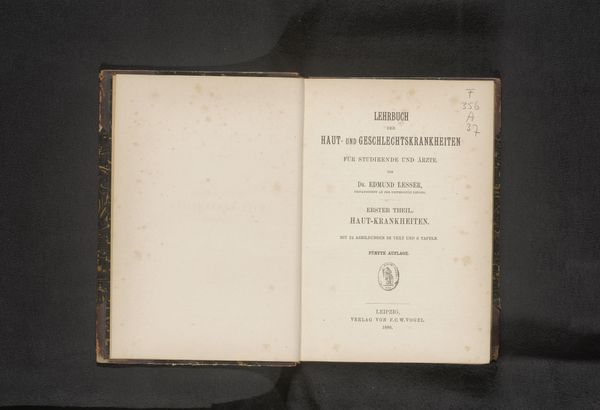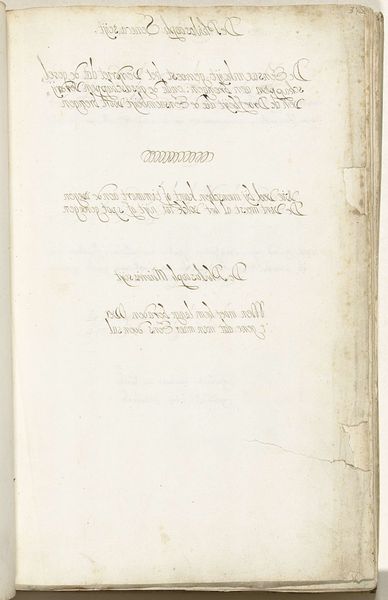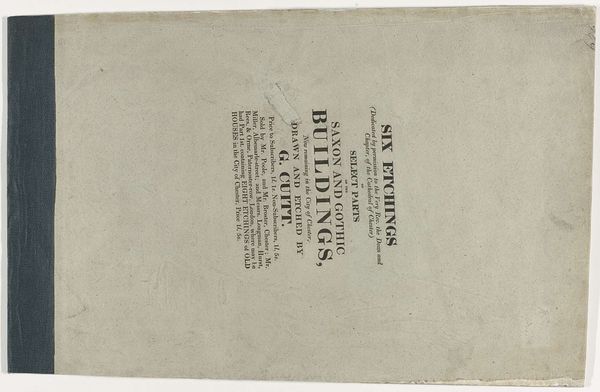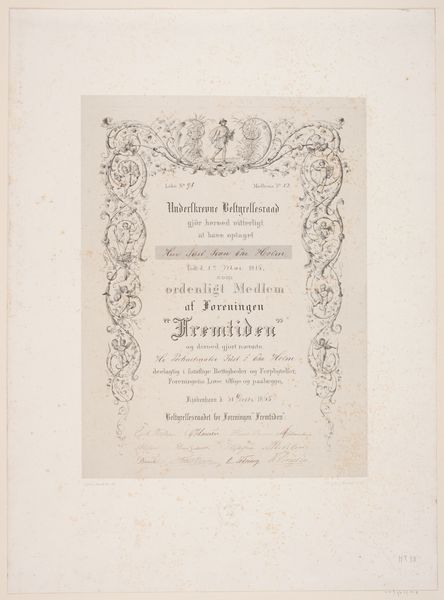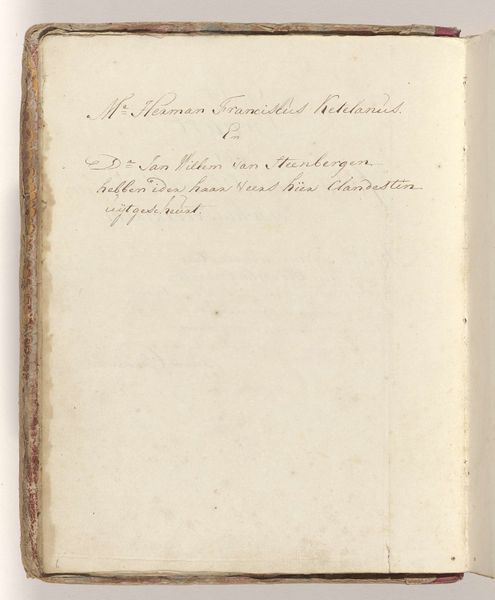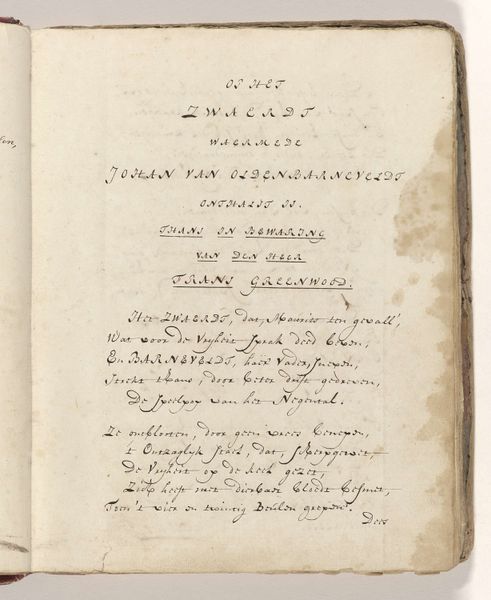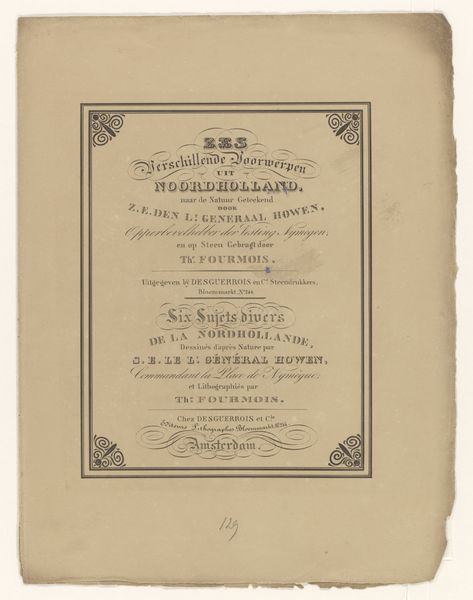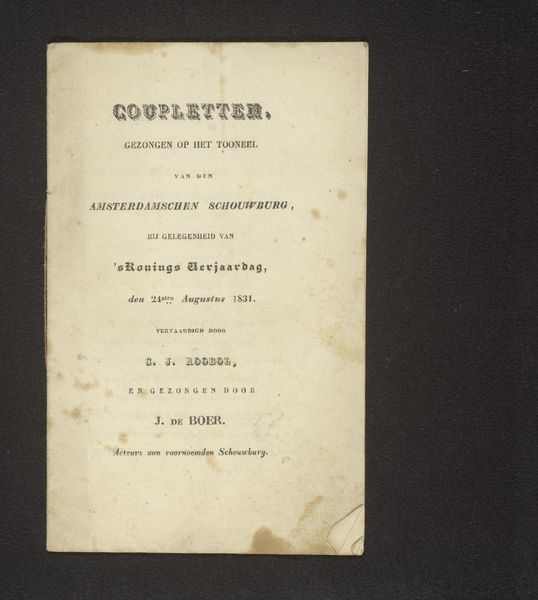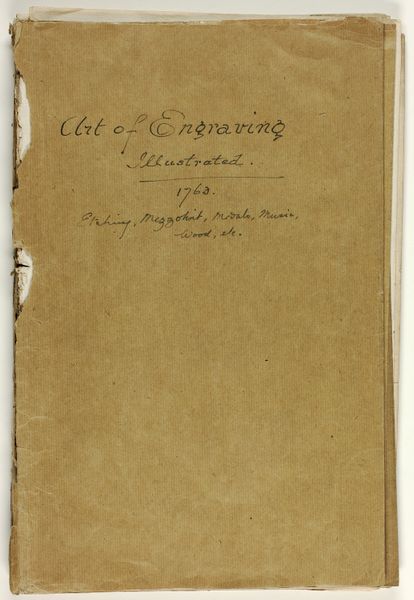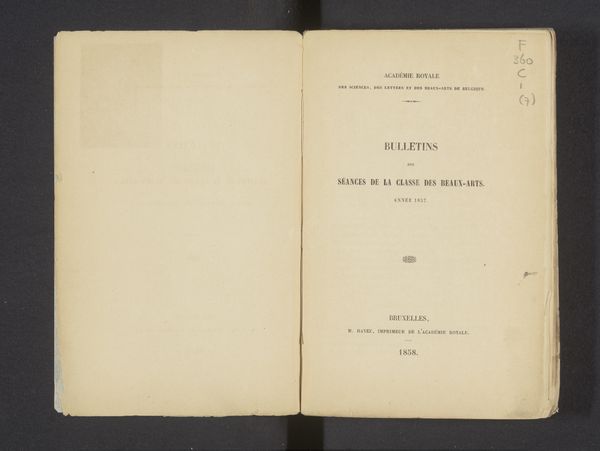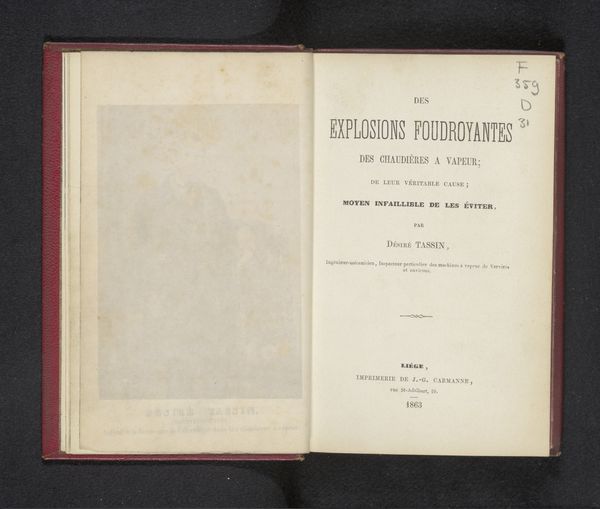
Subscription Page, from Horses of Many Countries, second volume c. 1818
0:00
0:00
drawing, lithograph, print, paper, ink, engraving
#
drawing
#
lithograph
# print
#
paper
#
ink
#
history-painting
#
engraving
#
calligraphy
Dimensions: 205 × 127 mm (image); 436 × 280 mm (sheet)
Copyright: Public Domain
Curator: So, what catches your eye about this particular print? The Art Institute of Chicago holds this intriguing piece, titled "Subscription Page, from Horses of Many Countries, second volume," created around 1818 by Carle Vernet. Editor: Immediately, it feels… archival. A little fragile, almost like holding a historical whisper. The delicate script on the rose-tinted paper creates a really interesting mood, slightly faded, but dignified, with beautiful calligraphy. Is this an announcement of some sort? Curator: Exactly. It’s a subscription announcement for a series of prints about horses from different countries. Carle Vernet, a celebrated painter of horses and military scenes, sought patrons to fund this ambitious project, showing both artistry and savvy self-promotion. Subscription models were quite common then, letting artists produce works that might not have found other avenues of support. Editor: Fascinating. So it's an artist basically drumming up funds for his coffee table book of horse pictures? There is something quietly subversive about it now when you explain it, but I want to be irreverent about the 'subversiveness'. Curator: It reflects broader trends in print culture. Subscription fostered a direct relationship with buyers and gave them some say in what kind of art got made. Plus, a print like this could act as a status symbol. Showing off you were educated, cultivated, involved with the artistic currents. Editor: I love that! So you aren’t just buying pretty pictures. You’re buying social capital and perhaps a bit of artistic immortality by association with Vernet. Still, it's incredible how something as simple as text on paper can open a portal into this vibrant historical reality. And I keep coming back to that slightly damaged paper - time certainly does leave its mark, literally. Curator: Indeed. What was once a purely utilitarian page has now become a time capsule, encapsulating artistic, economic and even social strategies from the early 19th century. Editor: Looking at the piece like that offers more than just the visual interest of horse breeds of yore, it gives insight into the commercial context of the art. Curator: Precisely, this reminds us to look beyond the beauty of the images in art and examine the entire apparatus behind their making and distribution. Editor: Beautifully said! Makes you think how differently we participate with art now.
Comments
No comments
Be the first to comment and join the conversation on the ultimate creative platform.
